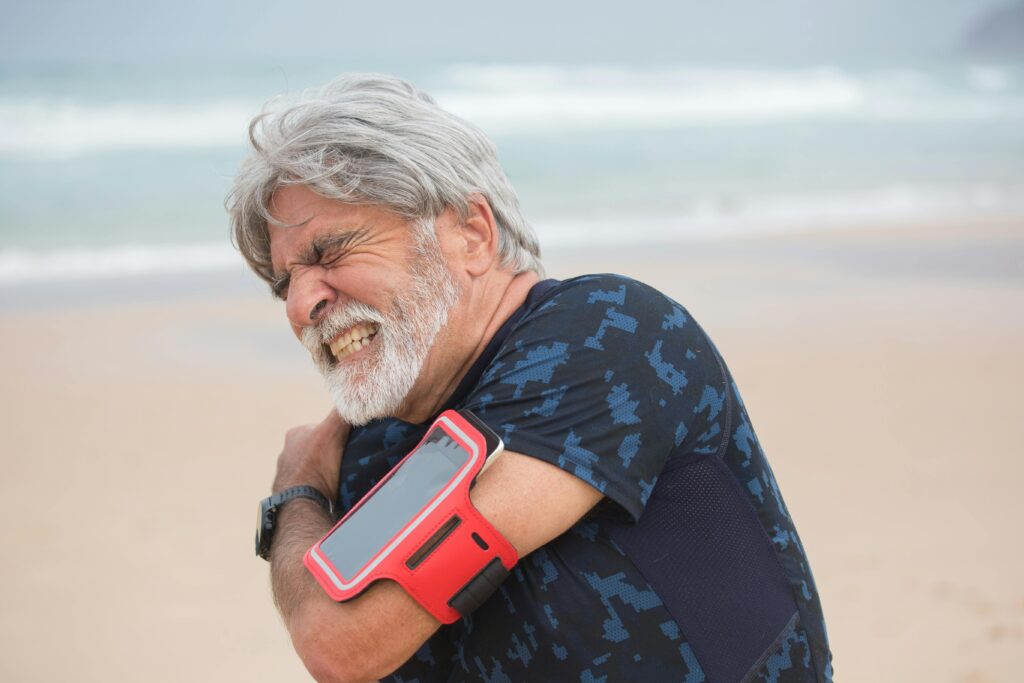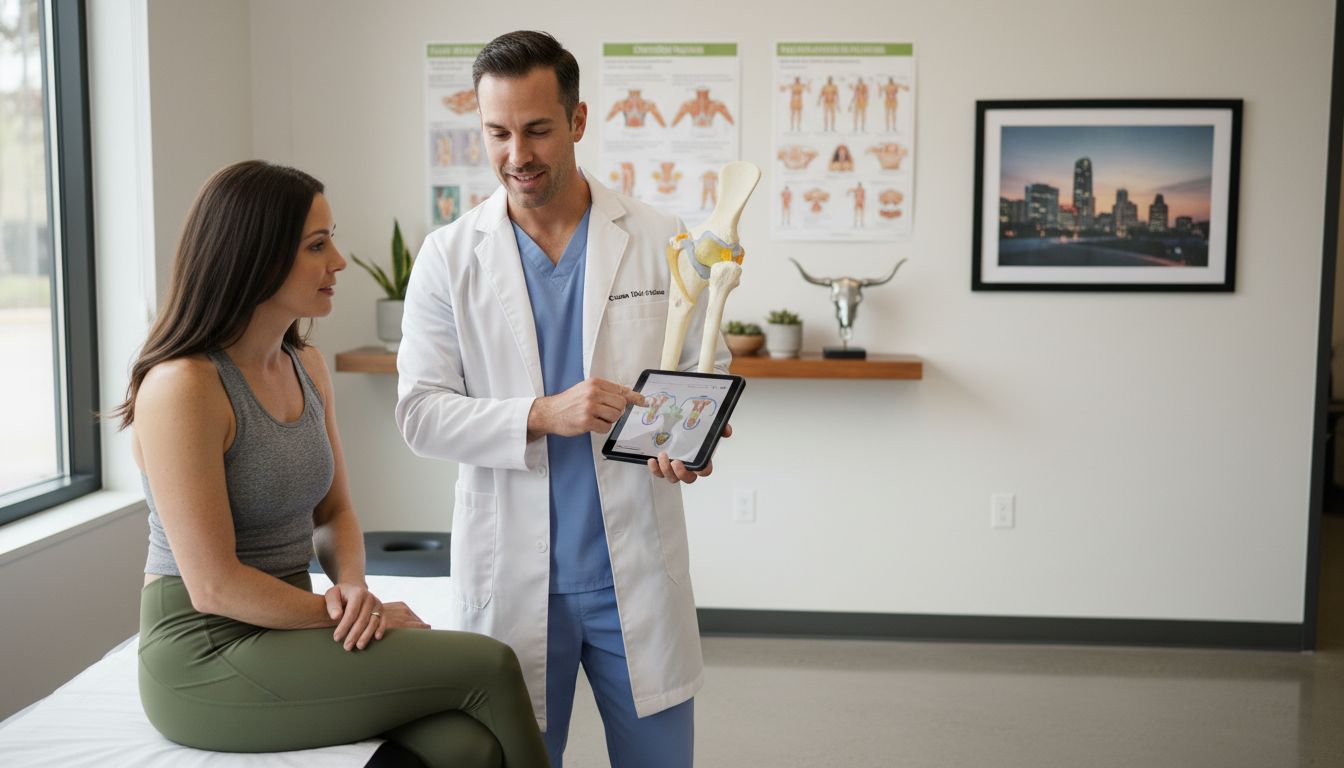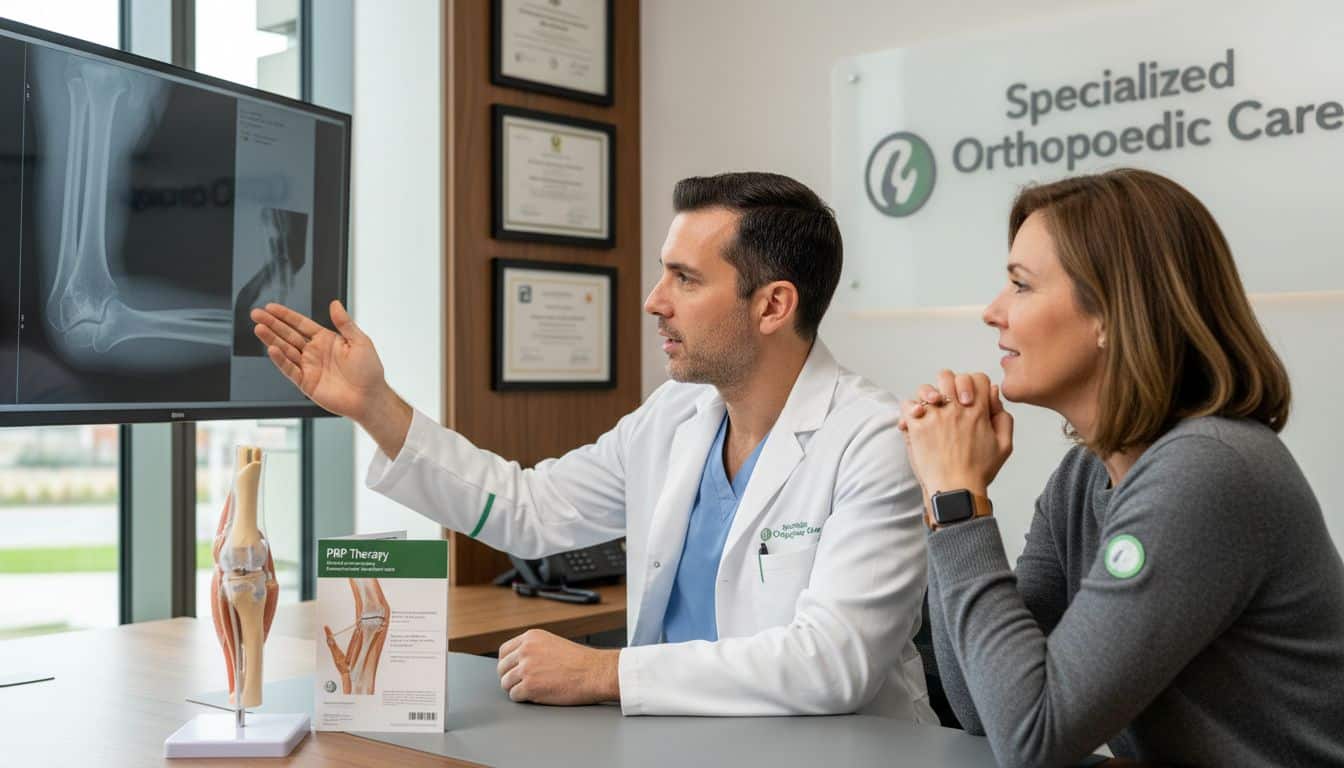If shoulder pain or injury is affecting your daily life, you’re not alone. Thousands of Austinites every year suffer from shoulder problems caused by sports, aging, or accidents. The good news? Advances in orthopedic shoulder surgery — available right here in Austin, Texas — offer safe, effective treatment options that can restore mobility, reduce pain, and help you get back to an active lifestyle.
In this comprehensive guide, we’ll cover:
- Common shoulder conditions requiring surgery
- Types of shoulder procedures performed in Austin
- What recovery looks like (including physical therapy)
- How to choose the right Austin orthopedic surgeon
- Insurance coverage and cost considerations
Understanding Shoulder Anatomy and Common Problems
The shoulder is the most mobile joint in the human body, consisting of multiple bones, muscles, tendons, and ligaments working together. According to the American Academy of Orthopaedic Surgeons, this complexity makes the shoulder vulnerable to various injuries and degenerative conditions.
Research published in the Journal of Shoulder and Elbow Surgery indicates that shoulder problems affect millions of Americans annually, with many cases requiring surgical intervention when conservative treatments fail.
When Is Shoulder Surgery Necessary?
Not every shoulder problem requires surgery. In fact, many patients first try non-surgical treatments like physical therapy, injections, and rest. According to guidelines from the American Shoulder and Elbow Surgeons, surgery becomes necessary when:
Clinical Indications for Surgery
- Pain persists despite conservative care for 3-6 months as recommended by the American Physical Therapy Association
- You’ve suffered a major injury (e.g., rotator cuff tear, labrum tear, fracture) requiring structural repair
- Your shoulder is unstable and frequently dislocates, affecting daily activities
- Arthritis or degeneration makes daily activities difficult according to Arthritis Foundation criteria
- Functional impairment significantly impacts work or quality of life
The Cochrane Database of Systematic Reviews provides evidence-based guidelines that help Austin surgeons determine when surgical intervention offers the best outcomes.

Types of Shoulder Surgeries in Austin
Orthopedic surgeons in Austin perform a variety of procedures, depending on the patient’s condition and using techniques validated by leading medical institutions:
1. Rotator Cuff Repair
A common surgery for torn tendons in the shoulder. Often performed arthroscopically with small incisions using techniques developed by the Arthroscopy Association of North America.
Key Features:
- Success rates: 85-95% according to American Journal of Sports Medicine data
- Recovery time: 4-6 months for full return to activities
- Techniques: Single-row, double-row, and transosseous equivalent repairs
- Indications: Full-thickness tears, failed conservative treatment
2. Labrum Repair / Stabilization Surgery
For patients with shoulder instability, dislocations, or labral tears. These procedures restore shoulder stability using techniques supported by research from the American Orthopaedic Society for Sports Medicine.
Common Types:
- Bankart repair: For anterior shoulder instability
- SLAP repair: Superior labrum tears common in overhead athletes
- Posterior labral repair: Less common but important for specific athletes
- Capsular shift: For multidirectional instability
3. Shoulder Replacement
In severe cases of arthritis or damage, partial, total, or reverse shoulder replacement may be recommended. Austin surgeons use implants approved by the FDA with excellent track records.
Replacement Options:
- Total shoulder replacement: For arthritis with intact rotator cuff
- Reverse total shoulder: For rotator cuff arthropathy
- Partial replacement: For certain fracture patterns
- Revision surgery: For failed previous replacements
4. Arthroscopic Shoulder Surgery
Minimally invasive surgery using small instruments and a camera, leading to faster recovery and less pain. Techniques follow standards set by the Arthroscopy Association of North America.
Advantages:
- Smaller incisions: Reduced scarring and faster healing
- Less pain: Minimal tissue disruption
- Faster recovery: Earlier return to activities
- Better visualization: High-definition cameras for precision
Recovery After Shoulder Surgery
Recovery depends on the procedure performed but generally follows protocols established by the American Physical Therapy Association and documented in the Journal of Orthopaedic & Sports Physical Therapy:
Typical Recovery Timeline
Initial Healing (0–6 weeks): Sling use, limited movement, pain management
- Protection of surgical repair
- Wound care and infection prevention per CDC guidelines
- Passive range of motion exercises
Physical Therapy (6–12 weeks): Regaining mobility, reducing stiffness
- Progressive range of motion restoration
- Gentle strengthening initiation
- Scar tissue management
Strengthening (3–6 months): Gradual return to activities and sports
- Progressive loading of repaired tissues
- Functional movement training
- Work-specific or sport-specific exercises
Full Recovery (6–12 months): Depending on the type of surgery
- Unrestricted activity clearance
- Return to competitive sports
- Long-term maintenance program
In Austin, many patients work with local physical therapy clinics specializing in post-surgical rehabilitation, following evidence-based protocols from the Physical Therapy Journal.
Sports-Related Shoulder Injuries in Austin
Austin is home to a vibrant sports culture, from UT athletics to recreational leagues. Unfortunately, athletes are particularly prone to shoulder injuries such as dislocations, labrum tears, and rotator cuff tears according to data from the National Athletic Trainers’ Association.
Common Athletic Shoulder Injuries
- Baseball and softball: Overuse injuries from repetitive pitching
- Swimming: Impingement syndrome and rotator cuff tendinitis
- Football and rugby: Traumatic dislocations and separations
- Tennis and racquet sports: Rotator cuff tears and impingement
- Cycling and outdoor sports: Acute fractures from falls
An orthopedic surgeon with sports medicine training can evaluate whether surgery or rehabilitation is the best path forward, following guidelines from the American Medical Society for Sports Medicine.
Choosing the Right Orthopedic Surgeon in Austin
When selecting a shoulder surgeon in Austin, consider criteria established by the American Board of Orthopedic Surgery and the American College of Surgeons:
Essential Qualifications
- Board certification in orthopedic surgery with current credentials
- Fellowship training in shoulder and sports medicine from ACGME-accredited programs
- Specialization in shoulder and sports medicine procedures
- Experience with both arthroscopic and open surgeries
- Hospital privileges at facilities accredited by The Joint Commission
Additional Considerations
- Local reputation and patient reviews in Austin community
- Accessibility: Office location, insurance coverage, scheduling
- Communication style: Ability to explain procedures clearly
- Outcomes data: Success rates and complication statistics
- Research involvement: Contributing to shoulder surgery advancement
Tip: Look for a surgeon who provides a comprehensive plan that includes surgery plus physical therapy, ensuring continuity of care throughout your recovery as recommended by the American Shoulder and Elbow Surgeons.
Insurance Coverage and Cost Considerations
According to Centers for Medicare & Medicaid Services guidelines, shoulder surgeries are typically covered when medically necessary. The American Medical Association provides coding standards that help ensure proper insurance reimbursement.
Cost Factors
- Type of procedure: Complexity affects pricing
- Surgical facility: Hospital vs. outpatient surgery center
- Surgeon experience: Fellowship-trained specialists may charge more
- Geographic location: Austin market rates
- Insurance coverage: In-network vs. out-of-network providers
Most major insurance providers in Texas cover medically necessary shoulder surgeries according to Healthcare.gov standards.
Advanced Techniques and Technology in Austin
Austin’s orthopedic surgeons utilize cutting-edge technology supported by research from leading medical institutions:
Surgical Innovations
- High-definition arthroscopy: 4K imaging for better visualization
- Ultrasonic devices: Precise tissue removal and hemostasis
- Biologic augmentation: PRP therapy and stem cell therapies
- Computer navigation: Enhanced precision in implant placement
- Knotless anchor systems: Improved rotator cuff repair techniques
Enhanced Recovery Protocols
Many Austin surgeons follow enhanced recovery after surgery (ERAS) protocols validated by the Enhanced Recovery After Surgery Society:
- Multimodal pain management: Reducing opioid requirements
- Regional anesthesia: Nerve blocks for better pain control
- Early mobilization: Faster return to function
- Patient education: Improved compliance and outcomes
Why Patients in Austin Trust Local Shoulder Specialists
Patients in Central Texas benefit from several advantages when choosing local care:
Regional Expertise
- Access to state-of-the-art orthopedic centers with latest technology
- Surgeons who regularly treat athletes, professionals, and retirees understanding diverse needs
- Integrated care between orthopedic surgeons and Austin-based physical therapists
- Research partnerships with University of Texas and local medical schools
- Multidisciplinary teams including sports medicine specialists, pain management, and rehabilitation
If you’re living with shoulder pain in Austin, the right care can help you get back to enjoying everything the city has to offer — from paddleboarding on Lady Bird Lake to playing a pickup game of basketball.
Prevention and Maintenance
The American College of Sports Medicine provides guidelines for preventing shoulder injuries:
Injury Prevention Strategies
- Regular strengthening: Rotator cuff and scapular stability exercises
- Proper warm-up: Dynamic preparation before activities
- Technique training: Proper mechanics in sports and work
- Activity modification: Avoiding overuse patterns
- Early intervention: Addressing minor problems promptly

FAQs About Shoulder Surgery in Austin
1. How long does recovery from shoulder surgery take?
Most patients regain full function within 6–12 months, depending on the procedure and commitment to physical therapy. Studies published in the Journal of Shoulder and Elbow Surgery show that structured rehabilitation programs significantly improve outcomes and reduce recovery time.
2. Is shoulder surgery painful?
Discomfort is common initially, but modern pain management techniques and minimally invasive surgery reduce long-term pain. The American Pain Society guidelines help Austin surgeons provide effective pain control throughout the recovery process.
3. How much does shoulder surgery cost in Austin?
Costs vary depending on the procedure and insurance coverage, typically ranging from $15,000-$40,000 before insurance. Many major insurance providers in Texas cover medically necessary shoulder surgeries according to CMS guidelines.
4. Can I avoid surgery with physical therapy?
In some cases, yes. According to the American Physical Therapy Association, conservative treatment success rates range from 60-80% for appropriate conditions. However, significant tears or degeneration may require surgical intervention for optimal outcomes.
5. What’s the success rate of shoulder surgery?
Most modern procedures have success rates above 85–90%, especially when paired with consistent physical therapy. Data from the American Joint Replacement Registry and other orthopedic databases consistently show high patient satisfaction and functional improvement rates.
Additional Educational Resources
For more information about shoulder surgery and treatment options, consult these authoritative medical sources:
- Mayo Clinic – Comprehensive orthopedic surgery information
- Cleveland Clinic – Shoulder conditions and treatments
- Johns Hopkins Medicine – Expert shoulder care guidance
- UpToDate – Evidence-based medical information
- PubMed – Latest research on shoulder surgery outcomes
- Physiopedia – Rehabilitation protocols and exercise programs
Conclusion
Shoulder surgery in Austin offers world-class treatment options for a wide range of conditions affecting shoulder function and quality of life. Whether you’re dealing with a sports injury, degenerative condition, or traumatic damage, Austin’s orthopedic specialists provide comprehensive care using the latest evidence-based techniques and technology.
The key to successful shoulder surgery lies in choosing an experienced, fellowship-trained surgeon who takes a comprehensive approach to care. By combining advanced surgical techniques with structured rehabilitation programs, Austin’s shoulder surgery specialists help patients achieve optimal outcomes and return to their active lifestyles.
If you’re experiencing persistent shoulder pain that interferes with your daily activities, work, or recreational pursuits, don’t let it limit your Austin lifestyle. Schedule a consultation with a qualified orthopedic shoulder specialist to explore your treatment options and develop a personalized care plan that meets your specific needs and goals.
Remember that early intervention often leads to better outcomes and can help prevent minor problems from becoming major issues requiring more extensive treatment. With Austin’s excellent orthopedic care available, there’s no reason to continue living with shoulder pain.







